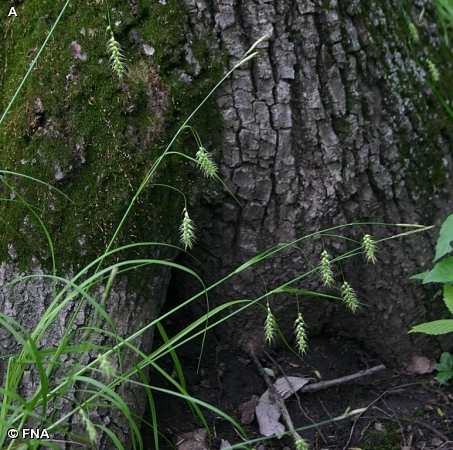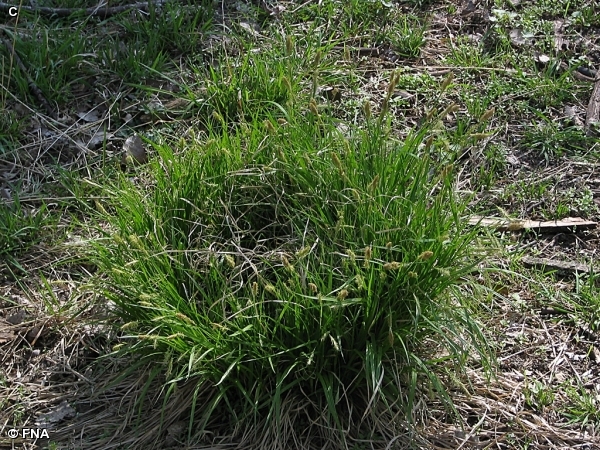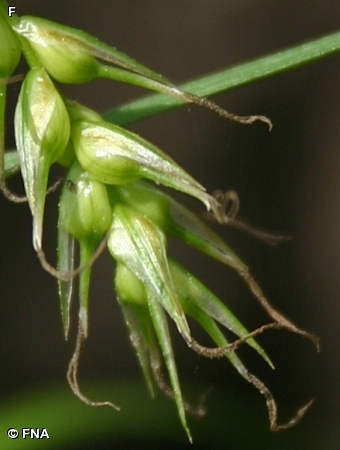
A rhizomatous native perennial forming dense, sometimes donut-shaped clumps (C) or extensive colonies like the one at Neale Woods on Bittersweet Trail (B). Flowering stems from 12-30 inches tall are about the same length or slightly longer than the 1/8-1/4 inch wide leaves. At the top of the stem are 1-3 male or mostly male spikes; below are 2-4 separate long-stemmed, female spikes which droop when mature (A,E). The mature light green to straw-colored perigynia have globular bases and characteristic long, thin beaks (F), as the common name suggests.
Abundant in upland woods often forming large, confluent colonies on ridgetops. Plants have been seen on the floodplain at Fontenelle Forest, but they are rare. Long-beaked Sedge is common on Hackberry Trail at Fontenelle Forest and abundant on Hilltop and upper Bittersweet Trails at Neale Woods. Flowering occurs in early to mid-April (D). The perigynia are present until mid to late May (F).
One of our easiest sedges to identify. No other upland sedge at Fontenelle Forest or Neale Woods has long-stemmed drooping female spikes.
The content of NatureSearch is provided by dedicated volunteer Naturalists of Fontenelle Forest who strive to provide the most accurate information available. Contributors of the images retain their copyrights. The point of contact for this page is: Neal Ratzlaff.





